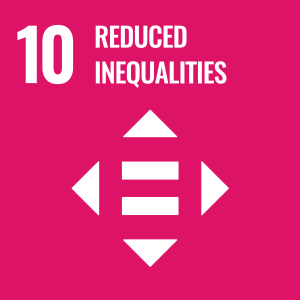
Dr Daniella Louise Jones
ResearchResearch interests
My research investigates how hormonal transitions affect brain structure, function, and metabolism in women, with a focus on cognitive ageing and vulnerability to neurodegenerative conditions. I use a multimodal neuroimaging approach - combining structural MRI, resting-state and task-based fMRI, magnetic resonance spectroscopy (MRS), and electroencephalography (EEG) - to identify brain-based markers associated with hormonal states.
I am broadly interested in how hormonal and non-hormonal interventions may support cognitive health across midlife and beyond. I also study how natural hormonal variation across the reproductive years relates to cognitive and neural dynamics. My work integrates neuroendocrinology, neuroimaging, and cognitive neuroscience to better understand sex-related trajectories in brain health.
Research interests
My research investigates how hormonal transitions affect brain structure, function, and metabolism in women, with a focus on cognitive ageing and vulnerability to neurodegenerative conditions. I use a multimodal neuroimaging approach - combining structural MRI, resting-state and task-based fMRI, magnetic resonance spectroscopy (MRS), and electroencephalography (EEG) - to identify brain-based markers associated with hormonal states.
I am broadly interested in how hormonal and non-hormonal interventions may support cognitive health across midlife and beyond. I also study how natural hormonal variation across the reproductive years relates to cognitive and neural dynamics. My work integrates neuroendocrinology, neuroimaging, and cognitive neuroscience to better understand sex-related trajectories in brain health.
Teaching
Convenor for (BSc) Biological Psychology with Research Methods 1
Convenor for (MSc) Brain and Behaviour with Research Methods
Sustainable development goals
My research interests are related to the following:



Publications
Background
Gamma-aminobutyric acid (GABA) and glutathione (GSH) play a significant role in the functioning of a healthy brain and can both be quantified using magnetic resonance spectroscopy (MRS). Several small-scale studies have suggested MRS measured GABA may fluctuate with the menstrual cycle, but the effects on GSH are unknown. Utilising recent developments in MRS acquisition, this multi-lab study explores this issue across 4 distinctive brain regions.
New methods
Data were analysed from 12 independent sites from which a total of 30 women were scanned during three phases of their menstrual cycle corresponding to early follicular, ovulation and mid luteal phases. HERMES and HERCULES sequences were used to measure GABA and GSH in voxels located in the left motor cortex, left posterior insular, medial parietal and medial frontal. Linear mixed models were used to assess the variability contributed by site, participant and menstrual cycle phase.
Results
Similar variance was attributed to site and menstrual cycle phase for both GABA and GSH data. No systematic changes in GABA or GSH were revealed for any voxel as a consequence of menstrual cycle phase.
Comparison with existing methods
Despite our larger sample size and inclusion of more brain regions we fail to replicate previous findings of GABA change as a consequence of menstrual cycle phase. We also show for the first time that MRS measures of GSH so not significantly alter with cycle.
Conclusions
Our findings suggest that the menstrual cycle has minimal impact on MRS measures of GABA and GSH. The presence of a menstrual cycle should not be used as justification for exclusion of women in MRS studies.
Background
Oestrogen plays a crucial role as a female hormone, regulating reproductive function and
neurological processes. Changes in oestrogen levels throughout the reproductive lifespan are
associated with alterations in cognitive function, and the loss of oestradiol (E2) at menopause can accelerate cognitive decline. Interest in the potential therapeutic benefits of hormone replacement therapy (HRT) to supplement E2 levels has grown. However, there is limited evidence on how HRT affects brain chemistry, structure, and cognitive decline trajectories in postmenopausal women.
Methods
This thesis offers a comprehensive examination of HRT's impact on human neurochemistry, neuroanatomy, and memory decline post-menopause through the use of magnetic resonance spectroscopy (MRS) and magnetic resonance imaging (MRI) in a sample of 52 women.
Additionally, memory changes over a 10-year period are evaluated in a large UK cohort (N =
2610).
Findings
The results of the neuroimaging study show that increased blood E2 levels caused by HRT intake impact brain metabolites involved in glutamatergic signalling in the posterior cingulate cortex and phospholipid metabolism in the inferior parietal lobule. HRT use is also associated with increased hippocampal CA1 volume and a slowdown in age-related cortical thickness decline in frontal and parietal brain regions. However, the secondary data analysis suggests that HRT use may be linked to lower memory function after menopause without altering the age-related decline in memory.
Discussion
Overall, these findings highlight the significant role of hormone levels in brain chemistry,
structure, and memory in ageing women, with potential modulation through HRT. While there
may be benefits to brain health in a confined sample, the effectiveness of HRT is likely influenced by various factors such as the timing of initiation, dosage, formulation, frequency, and duration of treatment, as well as factors associated with general health, lifestyle, and genetic characteristics.
A comprehensive assessment of these variables in a larger, more diverse cohort is essential to establish the impact of HRT on memory preservation. Still, the work presented in this thesis provides a first insight to some of the key physiological and cognitive factors that change as a consequence of ageing and that might be further influenced by HRT.
Anxiety is one of the most prevalent mental health problems; it is known to impede cognitive functioning. It is believed to alter preferences for feedback-based learning in anxious and non-anxious learners. Thus, the present study measured feedback processing in adults (N = 30) with and without anxiety symptoms using a probabilistic learning task. Event-related potential (ERP) measures were used to assess how the bias for either positive or negative feedback learning is reflected by the feedback-related negativity component (FRN), an ERP extracted from the electroencephalogram. Anxious individuals, identified by means of the Penn State Worry Questionnaire, showed a diminished FRN and increased accuracy after negative compared to positive feedback. Non-anxious individuals exhibited the reversed pattern with better learning from positive feedback, highlighting their preference for positive feedback. Our ERP results imply that impairments with feedback-based learning in anxious individuals are due to alterations in the mesolimbic dopaminergic system. Our finding that anxious individuals seem to favor negative as opposed to positive feedback has important implications for teacher–student feedback communication.

